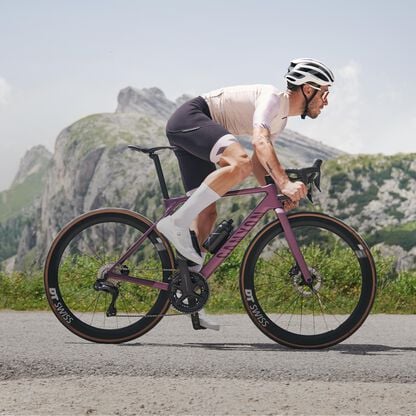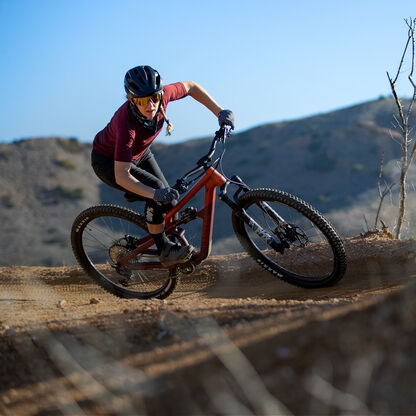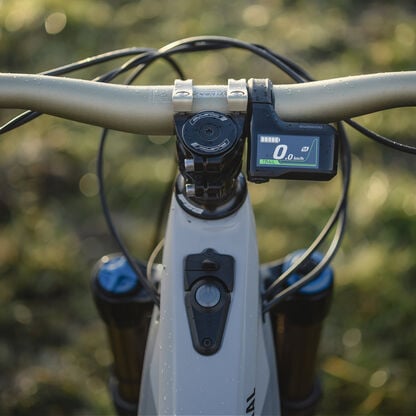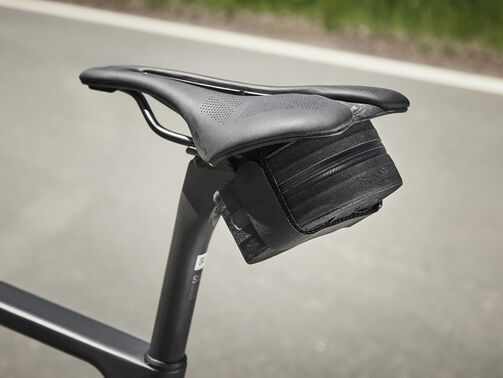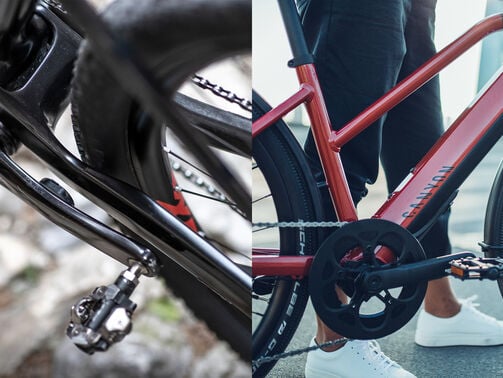Presta vs Schrader valve: Which is right for your bike?
Everything you need to know about Presta and Schrader valves, how to use and maintain them, and which one is right for your bike.


Though not the most eye-catching component on your bike, the bicycle valve is vital. It lets air be pumped into your tyres, allowing you to ride both fast and comfortably. Whether you ride a road bike, mountain bike, electric bike or a gravel bike, your bicycle will typically have a Presta valve, occasionally a Schrader valve sticking out of the wheel rim. Both valve types are inflated and maintained slightly differently so it is important to determine which one will work best for your bike and riding style.
Contents
What is a Presta valve?
The most common bicycle valve type, especially on higher end bikes, is the Presta valve. Presta valves are most commonly found on road bikes or bikes with tyres that require a higher PSI, though with the growing popularity of tubeless systems, they now often appear on other bike types as well.
Whether as an inner tube valve type or as part of a tubeless system, the Presta valve is a thin metal valve that tapers towards its head. They have a textured nut at the top, which can be opened to allow air to enter and pressed down to release excess pressure inside the tyre.
Advantages and disadvantages of Presta valves
Presta valves are ideally suited for bicycles because they are light, require a smaller hole in the wheel rim, seal using only air pressure and can be extended for use on deep section rims. This makes them perfect for road cyclists who are looking to keep their bikes as light as possible. Presta valves on tubeless systems (and on some tubes) have a removable core. The main benefit of this is it allows tyre sealant to be poured in. These removable cores can also be replaced if they get bent or damaged, prolonging the life of the valve.
That being said, there are still some drawbacks to Presta valves. Though many modern pumps are designed to be used with both Presta and Schrader valves, older pumps and many air compressors are not Presta compatible and will need an adapter. Some riders may also have issues when trying to unscrew the nut, especially while wearing gloves, as they are quite small.
What is a Schrader Valve?
A Schrader valve is usually found on cars and less expensive bikes. It is wider than a Presta valve and has the same circumference from top to bottom. A Schrader valve has a threaded upper section, allowing a pump head to attach to it. These valves have a spring-loaded pin in the centre, acting as a check valve to control airflow. This valve type requires pressure on the pin to ensure air is pumped into the tube or tyre. Schrader valves are generally heavier than Presta valves. Schrader valves are most commonly used on tubes and are only very rarely used with tubeless systems.
Advantages and disadvantages of Schrader Valves
Though Schrader valves are slightly heavier than Presta valves, they can be easier to use and are compatible with many types of bike pump and air compressor, including the ones commonly found at gas stations. Schrader valves are often found on kids bikes because they are easier for children to inflate on their own.
However, Schrader valves can be harder to fix if anything goes wrong as replacement parts are not generally available.

Key differences between Presta and Schrader valves
Now that you have the basics of each type of valve, here is a closer look at how they compare to each other.
Size and design
Presta valves are smaller and have a slimmer profile than Schrader valves and often come in longer lengths than Schrader valves. However, they have a nut that needs to be opened before the tyre can be inflated, while Schrader valves do not.
Durability and maintenance
Both valve types are fairly durable, though Presta valves often have replaceable valve cores to extend their lifetime. Because of this, Presta valves are easier to maintain.
Air pressure compatibility
Presta valves work best with higher pressure systems, such as those on road bikes, while Schrader valves are best suited to lower pressure tyre systems.
Valve hole size on rims
Presta valves require a smaller hole in the rim and can be used in rims that are drilled for Schrader valves. Schrader valves require a larger hole and cannot be used in rims drilled for Presta valves.
Which valve should you choose?
So which valve should you choose for your bike? In most cases and especially if you are riding a road or gravel bike, Presta valves are the best option. This is also the case if you are running a tubeless system on your bike. However, for casual riders, especially those on hybrid or mountain bikes, the convenience of Schrader valves will likely win out over Presta valves.
How to inflate and maintain Presta and Schrader valves
First, ensure your bicycle pump is intended for use on your chosen bike valve type. In the case of Presta valves, untwist the textured nut at the top of the valve to open it. Quickly press the nut down to release any air stuck in the valve then press the head of the pump onto the valve. Once in place and depending on your model and style of pump, twist it into a snug position or open a lever. You can now proceed to pump your inner tube or tubeless tyre. Smaller pumps require more strokes and energy to inflate tyres, whereas larger floor or track pumps need fewer strokes and are therefore easier to use.
For Schrader valves, use a fingernail, key or other small object to press down on the pin in the centre to release any remaining air from the valve. Then, press the head of the pump onto the valve and either twist the head into position or open the lever. You can then proceed to inflate your tyre in the same way you would with a Presta valve.
Some pumps may need an adapter to be used with a Presta valve. In order to use an adapter, first untwist the nut and release some air as you would when using a Presta pump, then install the adapter and pump up the tyre as normal. When the tyre is inflated, remove the adapter and close the nut securely.
Tips on valve maintenance and prolonging valve life
In order to prolong the life of your valve, especially if you are running tubes, keep your tyres pumped up so that the valves stay in alignment. If your tyres don’t have enough pressure, the valves can shift out of alignment, resulting in breakage around the base of the valve and consequently punctures.
For Presta valves with removable cores, it is worth checking that your cores are secure so that they don’t come out when inflating your tyres. This can be done with a valve core tool or a small amount of blue Loctite if necessary.
Presta vs Schrader bike valve: final thoughts
Neither a Presta valve nor a Schrader valve is necessarily better. Both work well for their intended purpose. However, given Schrader valves only appear on cheaper bikes, you can assume that a bike using Presta valves will offer superior performance.
If you’re still undecided on which valve type is better suited to your style of riding, check out the table below for a quick comparison between the two.
| Presta | Schrader | |
|---|---|---|
| Pump compatibility | Compatible with many newer pumps – may need an adapter for older models and compressors. | Compatible with most floor pumps and compressors, may not be compatible with handheld pumps or CO2 inflators. |
| Tubeless compatibility | Used with most tubeless systems. | Not commonly used with tubeless systems. |
| Ease of replacing/maintaining | Valve cores can be removed for cleaning or replaced if they get bent. Easy to both replace parts and maintain the valve. | Parts cannot be replaced – if the valve breaks, the whole tube will have to be replaced. Easy to maintain. |
| Ease of use | Can be difficult to use in wet or cold conditions while wearing gloves. | Easy to use. |
An important point to remember- the majority of cyclists, especially road cyclists, carry pumps compatible only with Presta valves. So, if you’re on the road or trail, suffer a puncture and need help from a fellow rider, you may be out of luck if your bike is equipped with Schrader valves. It’s always better to be safe than sorry, so always carry your own pump and make sure it’s compatible with your valve type. Happy riding!
Did this article help?
Thank you for your feedback
